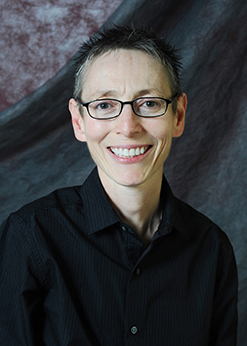
Gina Bertocci, professor and endowed chair of biomechanics in the J.B. Speed School of Engineering bioengineering department, recently received a grant for $599,876 from the National Institute of Justice for research that could help detect child abuse in young children.
The research project is called, “Biomechanical characterization of video recorded short distance falls in children.” Its purpose is to provide forensic data that will help identify the causes of trauma in young children who may not be able to communicate instances of abuse. Bertocci’s research looks to even the field, not only serving to identify victims of physical abuse, but to aid parents who were wrongly accused.
“We know that falls do happen and those falls sometimes do produce injuries. We also know that the history of the fall is that the fall is the most commonly given excuse by caregivers to hide abuse,” Bertocci said. “We want to be able to intervene early for those kids who have been abused.”
Bertocci’s research into pediatric injury has evolved to delineate between abuse and accidents specific to falls, the most commonly attributed cause of injury in cases of suspected abuse.
For her newest research, Bertocci is working with a local daycare to capture, safely and with parental permission, video of children falling in a controlled environment.
“We use crash test dummies,” said Bertocci. “We have studies that are ongoing where we are working with clinicians working with children who have come into an ER setting, to better understand a lot of injuries associated with a fall.”
As part of that process, members of her team have selected a location that features a variety of surfaces, which can account for any potential differences upon impact, as well as mounted head cameras that can help identify the velocity of a fall from standing position. It’s through that data, along with several other factors, that Bertocci hopes to develop a database for future use in legal or criminal cases.
“There is an absence of evidence-based data, which has led to a controversy in biomechanical compatibility. Our goal is to improve the accuracy in forensic biomechanical compatibility,” Bertocci said. “In order to plug this gap, related to not having witnessed short distanced falls, how can we fill that gap? The one way is to video record kids in a natural setting. And to capture them in a natural environment, while they’re playing.”
Ultimately, this research allows Bertocci to help children without a voice, by providing reproducible evidence to a common problem in distinguishing abuse from an accident, which is often difficult to determine with children who are not only incapable of communication, but are still developing their basic motor skills.
“The children who are at greatest risk are those who are between 0-1 year old and they are not able to communicate,” said Bertocci.
































